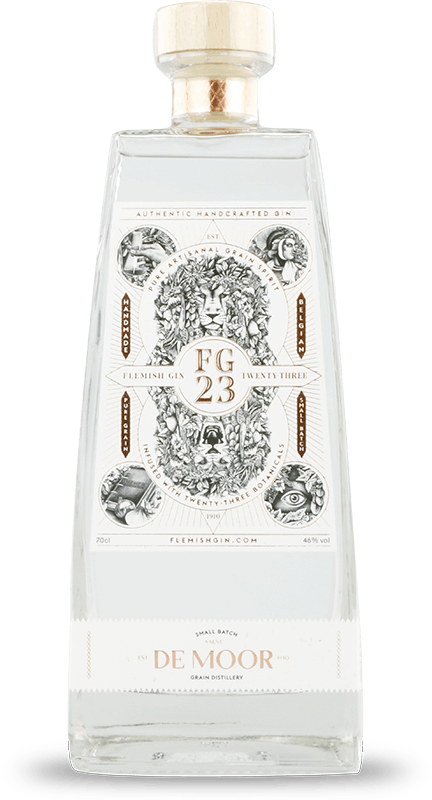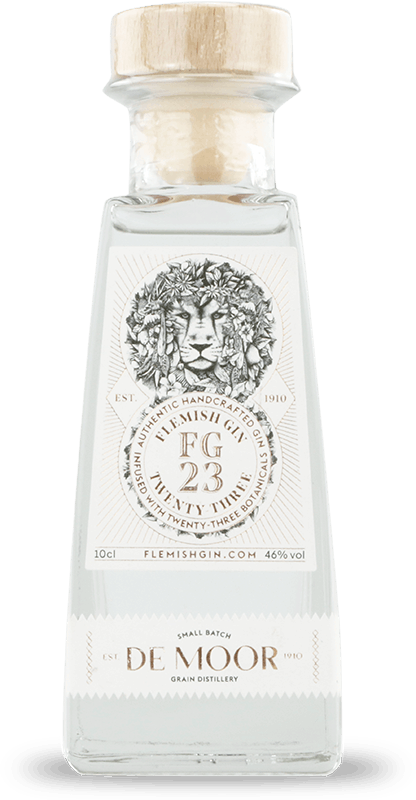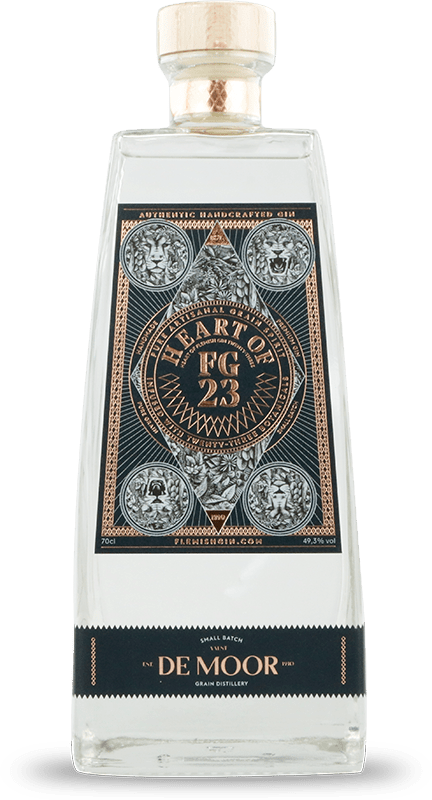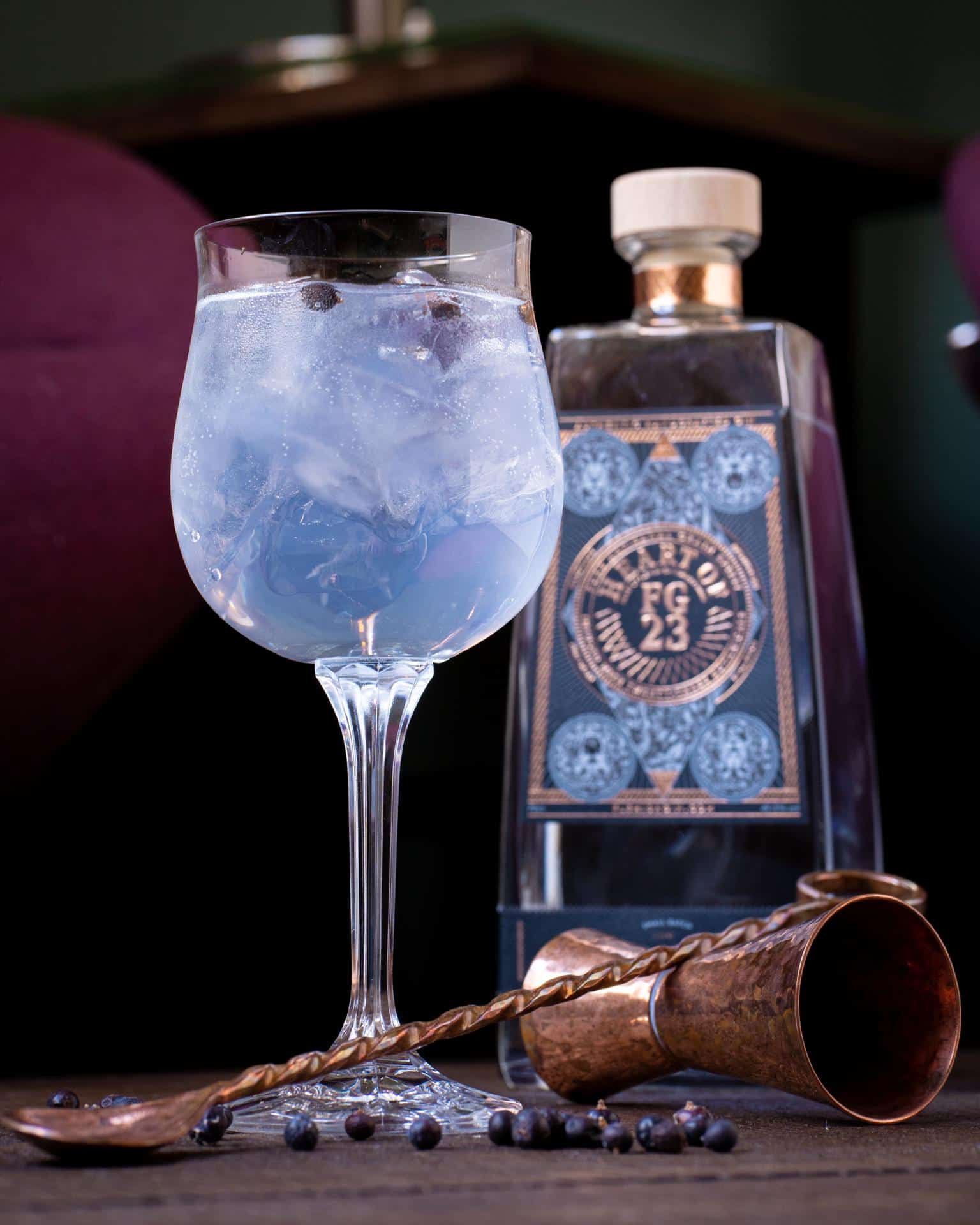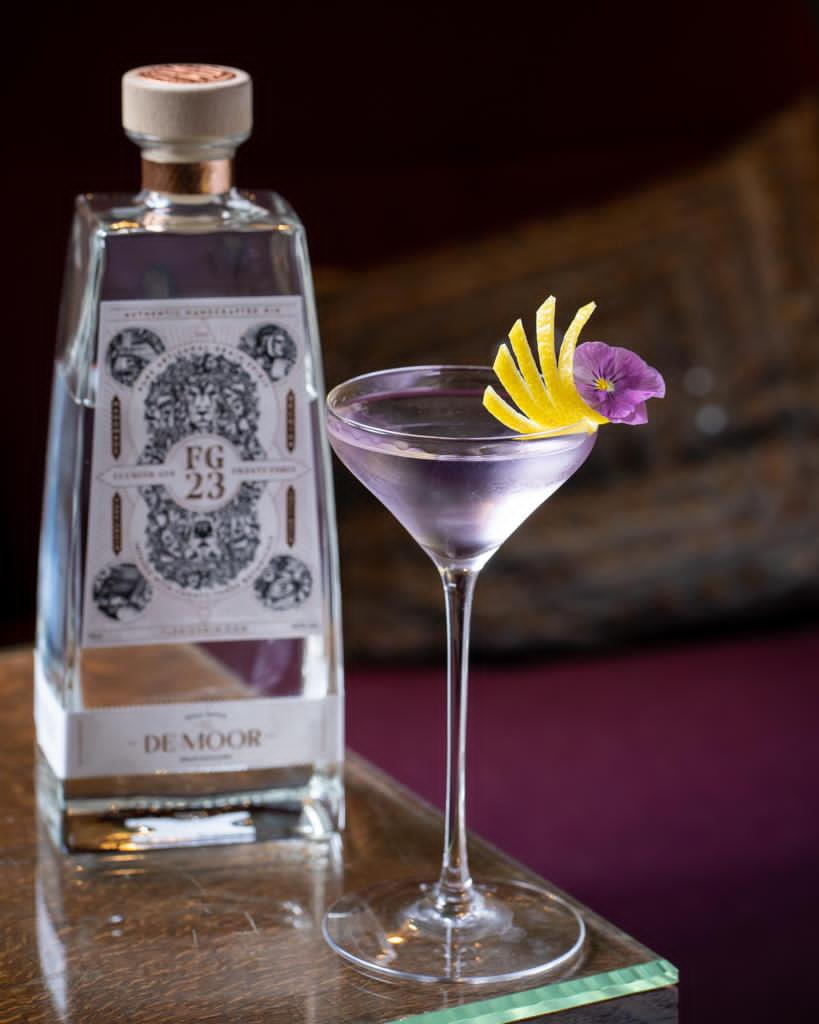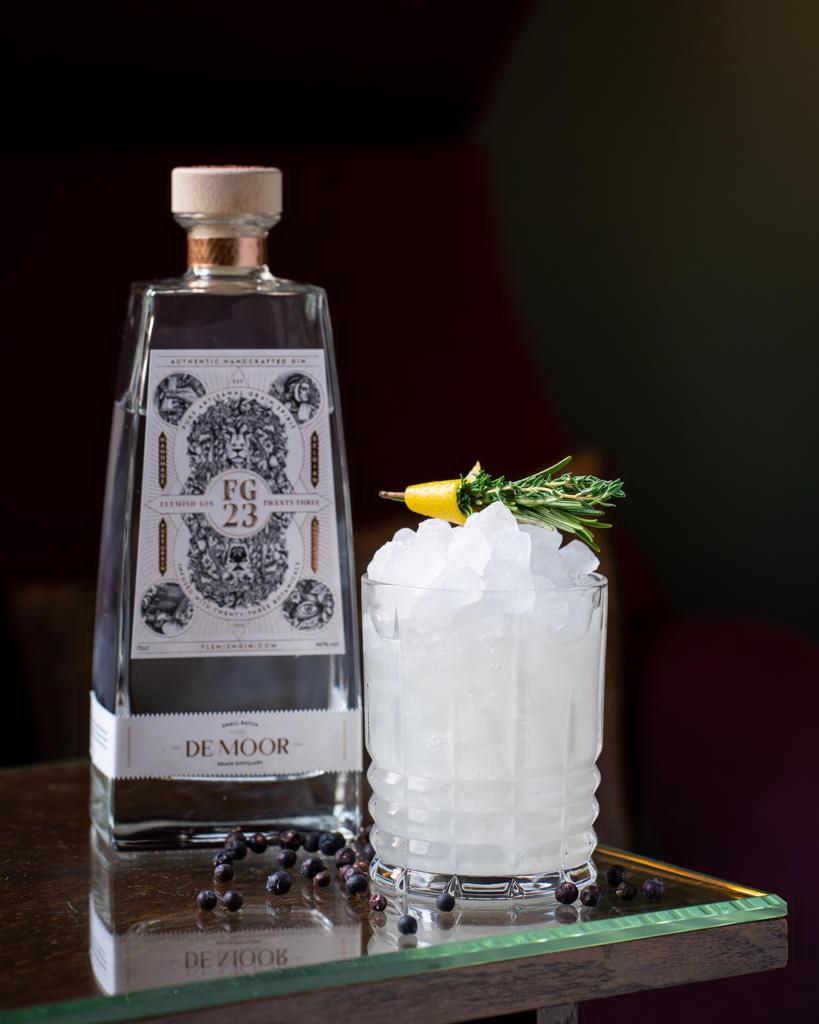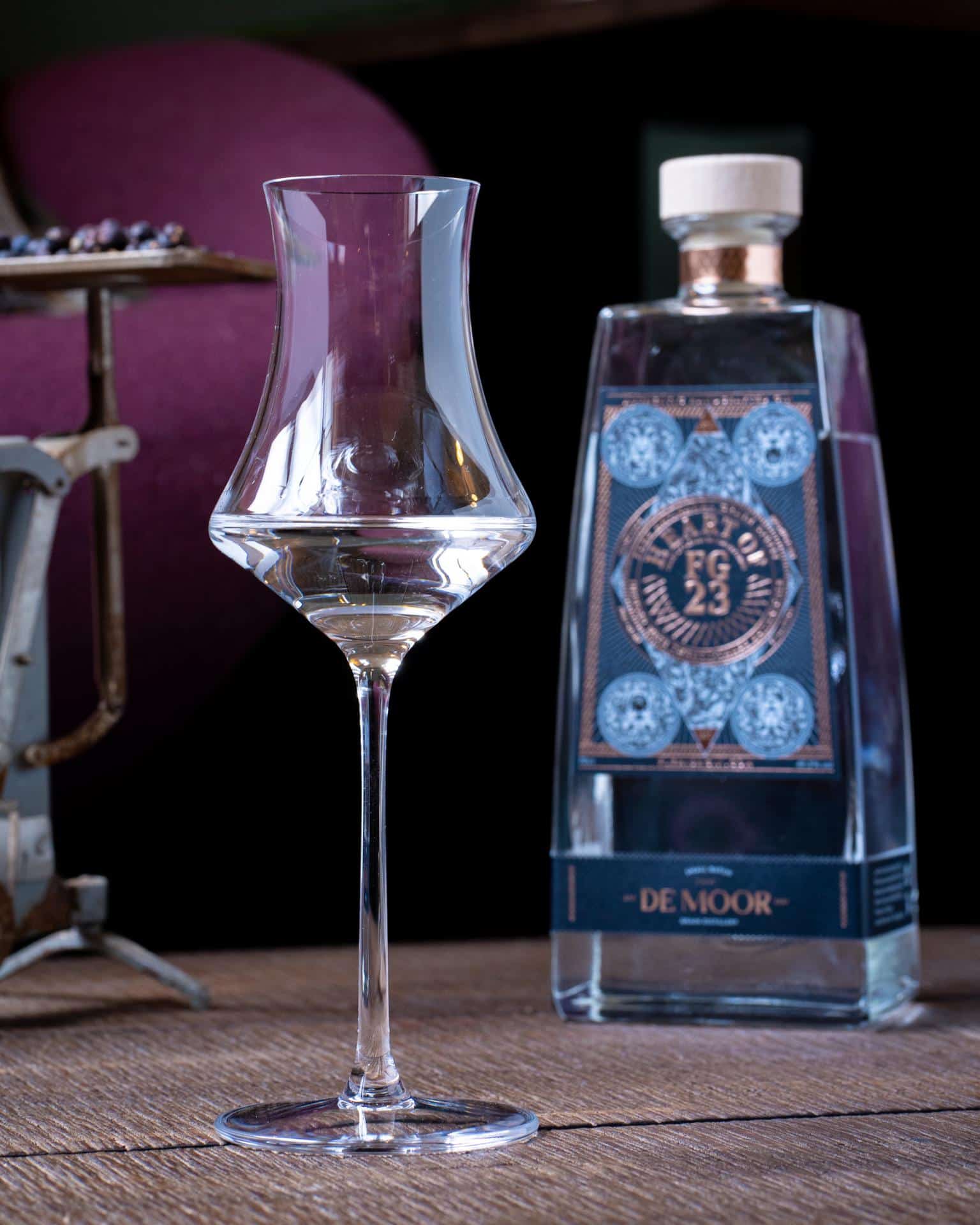

Authentic product from the region where gin originated.
Authentic
Handmade
FG 23 is a handcrafted premium gin, made with 23 botanicals and two times distilled in a copper pot still. This gin is made in-house, from grain to drop, by Stokerij De Moor …
a family owned distillery since 1910, one of the few warm distilleries in Flanders, Belgium. Through a slow distillation process, drop by drop, the gin is created with all artisanal traditions in mind.
Flemish
Belgium
Flemish Gin 23 was born in 2012 in Flanders, Belgium. This is the region where genever, the Father of gin, originates. Genever, a juniper berry-based drink …
was first consumed for its healing powers, later it became a pleasure drink. The oldest written source, describing the healing characteristics of this drink, comes from Flanders, more specifically Bruges. The English troops that came to fight with us against the Spaniards, also liked to drink a shot of this “gin-niver” (nickname Dutch Courage), later shortened to “gin”.
Pure
Grain
Flemish Gin 23 is made from 100% grain alcohol. This high-quality alcohol has a much finer taste than neutral ethyl alcohol of agricultural origin (for example from sugar beets and potatoes).
Finest
ingredients
23 botanicals are selected to ensure the perfect aroma of Flemish Gin 23 by combining the maceration and vapour infusion technique. Apart from the traditional gin …
botanicals such as juniper berries and cardamom, old-fashioned genever botanicals like carob and cassia play a big role. Hops give the gin a typical Belgian twist.
Unique
Small batch
What makes Flemish Gin 23 unique is the way in which the botanicals are processed: all 23 botanicals are macerated for a minimum of 48 hours in our own …
malt wine (a pot-distillation of malted grain) and then placed into a linen bag which is hung inside the copper pot still, to release their aromas to the alcohol vapour again during the second distillation (vapour infusion). This killer combination of maceration and vapour infusion ensures that the essence of all 23 botanicals are incorporated into the spirit. Flemish Gin 23 is a small batch gin: we can distill a maximum of 200 litres per batch. Each bottle is filled and labelled by hand.
Flemish Gin 23
Flemish Gin 23 (FG 23) is an authentic premium gin from Flanders, part of the Low Countries by the sea where genever (gin) has been distilled since the middle ages. The 23 selected botanicals used in a small batch copper pot distillation create exquisite flavors and taste. The gin is double-distilled and made in-house, from grain to drop, by Stokerij De Moor, a family distillery since 1910, one of the few warm distilleries (who make their own malt wine) in Belgium.
Expect a refined gin, fresh and clean, with a surprisingly soft mouthfeel. The juniper aroma is the solid base for intense spicy and zesty citrus flavors.
Limited edition
Heart of FG 23
For Heart Of Flemish Gin 23, our finest and most delicate gin, we only use the very heart cut of the small batch distillation. During the distilling process, our Master Distiller therefore selects a few cuts, where the finest and most intense flavors and aromas are concentrated. This gin is limited to a maximum of 36 hand-numbered bottles per batch.
Expect a pure and clean spirit: despite the 49.3%, the gin has an enormously smooth taste without any sharp edges. Pronounced zesty citrus. Peppery and spicy tones such as cinnamon, clove, cassia, liquorice.
Our Leo Botanicus
And the 4 arcana of Flemish Gin 23

Leo Botanicus
the 23 botanicals we use to distil our precious Flemish Gin 23 in a copper pot still. The result: a small batch of fresh and clean Flemish Gin or a punchy Heart of FG 23.

The masked Saint-Martin
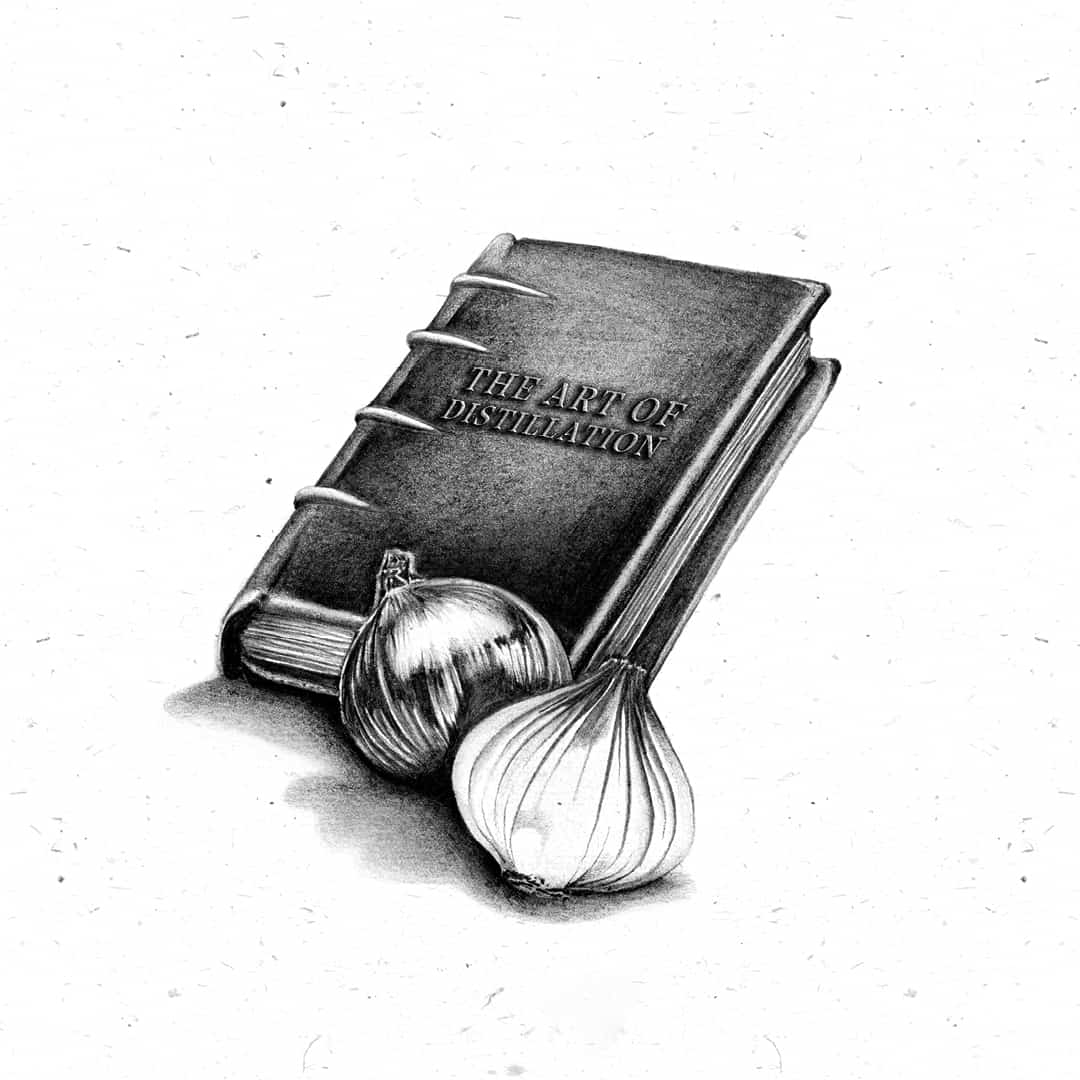
Book of Distillation

Erlenmeyer

Eye of Horus
Carefully selected ingredients
23 botanicals
All 23 botanicals are important for the taste of FG 23: the herbs, flowers, peels and berries determine the taste and aroma of the gin.
Hover over the labels for more information.
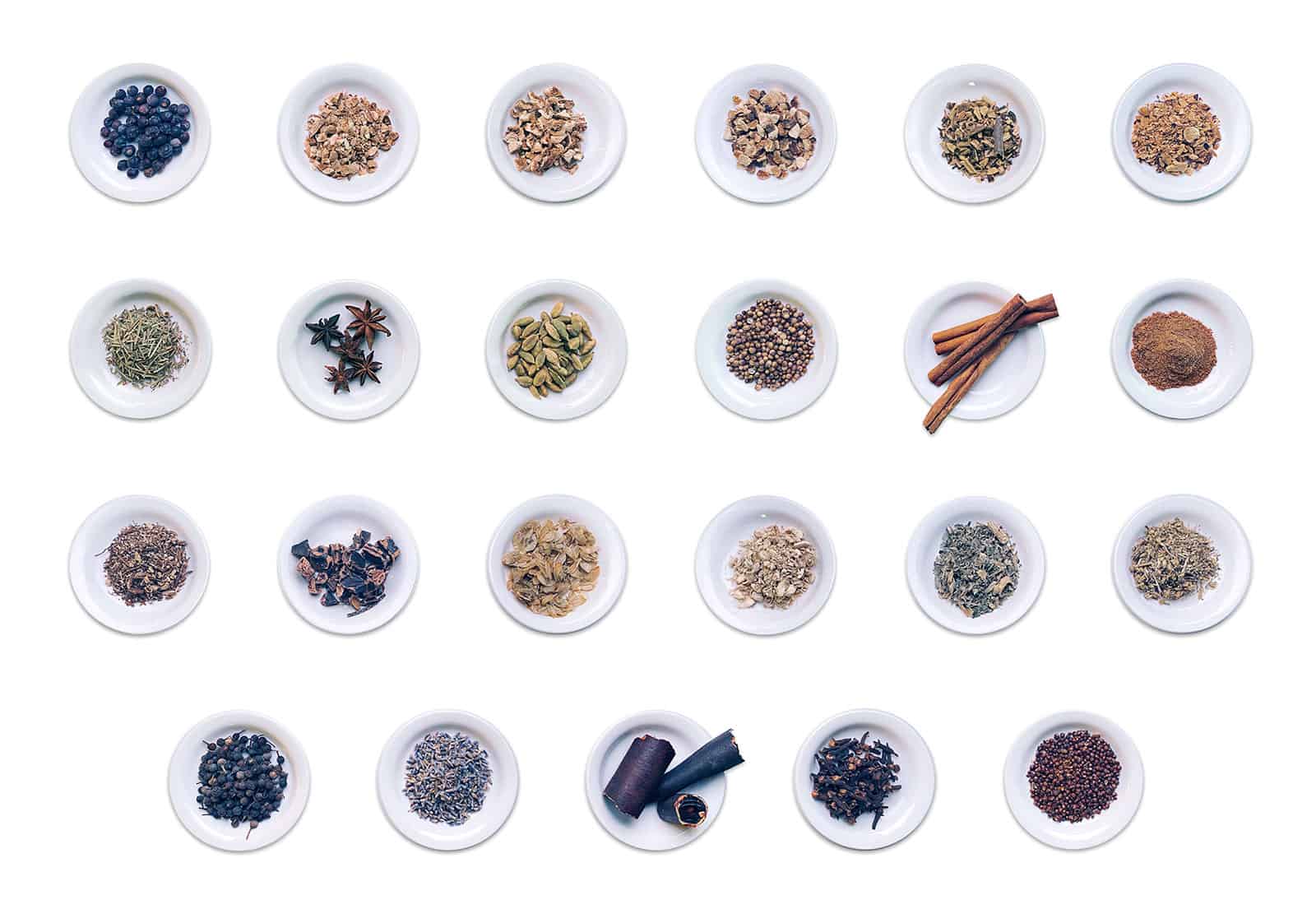
Juniper Berry
Juniper is the most important gin botanical: its aroma is dominant in both smell and taste. Juniper as a flavouring has been known for ages. The oldest recipe is found on a 4,000 year-old clay tablet from Babylon. Juniper berries have been found in Tutankhamun’s tomb, and the ancient Greeks used it as doping during their Olympic games.
In the Low Countries, it became popular in the Middle Ages as a medicine for stomach and intestinal complaints, but they also extracted oil from it for muscle and joint pain. Wood from the juniper tree was used to disinfect rooms against the plague. Afterwards, it was used to flavour Brandy, which later evolved into genever and eventually gin.
The juniper tree was omnipresent on the sandy soils and moors of the Low Countries. Unfortunately, this is no longer the case and the juniper we use in our FG 23 comes from Tuscany.
1 of 23 RosemaryRosemary from the south of France
Everyone knows what rosemary is, with its wonderfully penetrating, even a little resinous, perfume. The name comes from the Latin ‘rosmarinus’, which means sea dew, probably because this evergreen shrub was abundant on the coast. From ancient times until the Middle Ages, the herb was associated with love. Wedding garlands were often made from it.
2 of 23 AngelicaAngelica from Belgium
Angelica is easily found throughout the northern hemisphere. It has a sweet and pungent aroma and has been used everywhere for its medicinal properties.
It has an intense, fragrant odor. The plant forms part of the base accord for gin, consisting of juniper, coriander and angelica.
3 of 23 Orris rootOrris root from Southern Europe
The root of the beautiful Iris flower contains a very subtle, earthy aroma similar to that of violets. The name refers to the Greek Goddess of the rainbow. You probably also know the flower by its heraldic name: the ‘fleur de lys’, the national symbol of France. Funnily enough, this is a Frenchification of the old Dutch word ‘lieschbloem’, a symbol of the Salian Franks who lived in Flanders, where the Iris was flourishing, especially on river banks.
Orris Root is a traditional part of the aroma accord which gives gin its distinctive flavour. The “fixative” powers of the herb help bind the aromatics of other ingredients more tightly into the solution.
4 of 23 Star aniseStar anise from the Philippines
Star anise is the dried husk of a fruit, not to be confused with the anise plant. Star anise has a similar flavour, but is more pungent and powerful. The tree that bears the star anise fruit is called ‘Illicium Verum’, which freely translated means ’the real temptation’. Star anise is an intensely aromatic spice, giving a pleasant, sweet, aniseed punch to the gin.
5 of 23 CarobCarob from Southern Europe and North Africa
The pods of the carob tree have a high nutritional value, hence the comparison with bread. It is a sweet fruit with aromas of cocoa and coffee. When the pods are roasted and ground, you get carob powder, which was used as a substitute for cocoa powder. Carob is not a frequently used botanical for gin. We like to use it to give an extra punch to the flavour profile of FG 23.
6 of 23 Lemon peelsLemon peels from southern Europe
Citrus peels contain hundreds of pores filled with citrus oil. This oil has a remarkable taste and aroma – just think of the smell when you peel a lemon.
Lemon peel is one of the most important gin botanicals, because it contributes to a fresh citrus note whose crispness nicely compliments the heavier juniper and earthier spice notes. It hardly needs pointing out that a slice or twist of fresh lemon is the most common garnish for G&Ts.
7 of 23 CardamomCardamom from South India
Cardamom seeds have a sweet, aromatic, very pleasant smell. As early as 3000 BCE it was traded as far away as the Mediterranean Sea. It was used as a digestive and breath freshener, among other things. It is used in “speculoos” (typical Belgian biscuit) and other cakes.
Very little cardamom is needed to impart its strong, resinous flavour. Cardamom provides a distinctive sweet spicy flavour that works incredibly well with juniper and coriander.
8 of 23 HopsHops from Belgium
Everyone knows that hops are mainly used in beer, both for taste and preservation. Now hops are also used in gin, and not really for preservation – the alcohol does that – but purely for that typical floral, slightly bitter aroma. In the past, you could simply go and pick wild hops at the edge of the forest. Now there are only few hop-growing areas left in Flanders, 2 of them very close to the distillery.
9 of 23 Orange peelsOrange peels from Southern Europe
Orange peels contain hundreds of pores filled with citrus oil. This oil has a remarkable taste and aroma – just think of the smell when you peel a tangerine. Just like lemon peel, orange peels are an important gin botanical, because it contributes to the fruity, sweet and rich character of the gin.
10 of 23 Coriander seedsCoriander seeds from the Mediterranean
Coriander seed is also known as dizzy seed, but we do not know why. Perhaps it is because of its intense slightly sweet, slightly spicy citrus flavour.
Next to juniper, coriander is one of the key botanicals in gin. Coriander seed is very different in flavour delivery to fresh coriander; it puts light citrus notes into gin: lemon zest with a hint of lime, and slightly spicy notes.
11 of 23 GingerGinger root from Jamaica
Ginger is widely used as a spice and a folk medicine. We love its fresh, spicy taste and it combines great with citrus flavours.
12 of 23 LiquoriceLiquorice from South-Eastern Europe
Liquorice is the root of which a sweet, aromatic flavouring can be extracted. In Aalst, the place of birth of Flemish Gin 23, it is known as ‘kalisjestok’ (“liquorice stick”), because It does indeed look a bit like a stick. It used to be very popular with children to chew on, as the root contains a sweetener that is 30 to 50 times stronger than sugar. It is liquorice that brings all the other gin botanical flavours into harmony.
13 of 23 CinnamonCinnamon from Sri Lanka
Cinnamon is the inner bark of the shoots of the cinnamon tree. So not the bark, but the layer just under it. We use real Ceylon cinnamon for its strongly aromatic, sweet, warm taste.
14 of 23 Blessed thistleBlessed thistle from Italy
A thistle-like plant found in the Mediterranean area, it is slightly aromatic and mildly bitter. Many medicinal, almost magical properties were once attributed to it. This is not a commonly used gin botanical. Nevertheless we use it in our FG 23 because we know the botanical as a subtle flavouring agent for our genevers.
15 of 23 GentianGentian from the Alps
Gentian is a plant with beautiful flowers that grows mainly in mountainous regions. It is best known for its typical bitter taste, which is why it is also used in bitter aperitifs, liqueurs and cocktail bitters.
16 of 23 NutmegNutmeg from Sri Lanka
Who does not know the wonderful smell and taste of nutmeg? It looks like a simple little nut, although it is actually a kernel, but it is not that innocent. The nut was originally only found on the Banda islands in Indonesia. Nutmeg has been known in Europe since the early Middle Ages, but it was extremely rare and therefore in great demand.
By the end of the 17th century, the nut was no longer so rare, but it was still a status symbol for the rich. Evidence of this are the small silver boxes, the size of one nut, with a small grater hidden in the lid. This way, you had your portable nutmeg grater with you everywhere. Nutmeg was grated on almost everything back then, wine, water, tea, beer, meat, fish, vegetables, fruit, you name it. If you could afford it, of course! Nutmeg gives our gin a lightly sweet spiciness and a gentle woodiness.
17 of 23 YarrowYarrow from Belgium
Yarrow is found almost everywhere and has a somewhat bitter, bittersweet taste. Since ancient times, it has been used to treat battle wounds (therefore also known as Soldier’s Wound Wort) as it has blood-strengthening properties. Legend has it that Achilles had painted himself with a tincture of a plant to make himself invulnerable to arrows (from a magical centaur no less), everywhere but on his heel. That tincture was made with yarrow. When distilled it has a light, rosey note to it. It provides a bright, floral flavour profile to the gin.
18 of 23 Cubeb pepperCubeb or tailed pepper
Cubeb or tailed pepper comes from Indonesia and Sumatra. It looks like black pepper, but the dried berries have a small stalk, hence “tail”ed pepper. The name cubeb comes from Arabic ‘kabeba’ and is mentioned as such in alchemical writings. In The Book of One Thousand and One Nights from the 9th century, it is mentioned as a remedy for infertility and as an aphrodisiac. Marco Polo first brought it to Europe where it became so popular that it threatened black pepper trade. Curiously, it was also used by Catholic priests until the 17th century to exorcise demons.
We use it for its specific taste and hot-spicy aroma.
19 of 23 LavenderLavender blossom from the south of France
The scent of lavender immediately transports you to the south of France, the Provence. In ancient times lavender was already distilled into perfumes and oils. Lavender was also used very early on to flavour drinks. Distilled, this flower spreads a very fresh, citrusy aroma.
20 of 23 Cassia barkCassia from India
Cassia bark or drumsticks are the legumes of the Indian golden rain tree. These fruits have a diameter of about 2cm and can grow up to 60cm long, which makes their nickname a bit more logical. The fruits are picked and dried and have a cinnamon-like liquorice flavour.
21 of 23 ClovesCloves from Malaysia
The intense flavour of cloves needs no explanation. A clove is actually an unopened flower bud of the clove tree. It was already known to the Romans, but was quite rare and very expensive, as it came from Sri Lanka. It was so rare that in 1529 it was only available in two places in Europe: Lisbon and Antwerp (Belgium).
22 of 23 Grains of paradiseGrain of paradise from West Africa
Grains of paradise or Melgueta Pepper is a plant from the ginger family and closely related to cardamom. It has a fresh-sour, hot taste.
African gorillas apparently love it and it has been found to be good for their hearts as well. The Efik people of Nigeria use it to predict the future and in Haiti they use it in Voodoo rituals.
We use it in FG 23 because of its peppery punch, and to intensify the flavours in the gin, as well as bringing its own fragrant, lingering spice.
23 of 23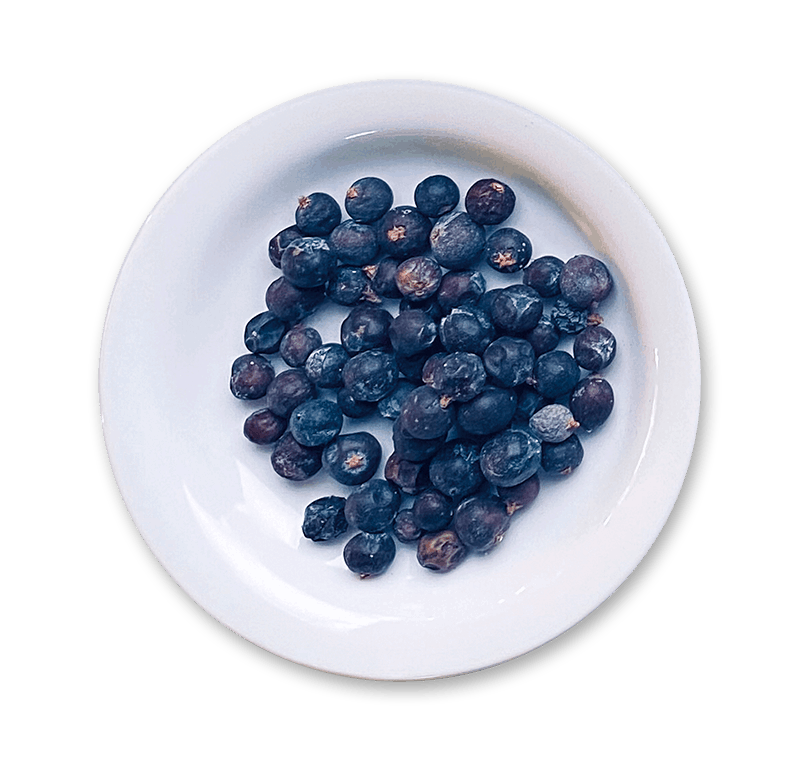
Juniper Berry
Juniper is the most important gin botanical: its aroma is dominant in both smell and taste. Juniper as a flavouring has been known for ages. The oldest recipe is found on a 4,000 year-old clay tablet from Babylon. Juniper berries have been found in Tutankhamun’s tomb, and the ancient Greeks used it as doping during their Olympic games.
In the Low Countries, it became popular in the Middle Ages as a medicine for stomach and intestinal complaints, but they also extracted oil from it for muscle and joint pain. Wood from the juniper tree was used to disinfect rooms against the plague. Afterwards, it was used to flavour Brandy, which later evolved into genever and eventually gin.
The juniper tree was omnipresent on the sandy soils and moors of the Low Countries. Unfortunately, this is no longer the case and the juniper we use in our FG 23 comes from Tuscany.
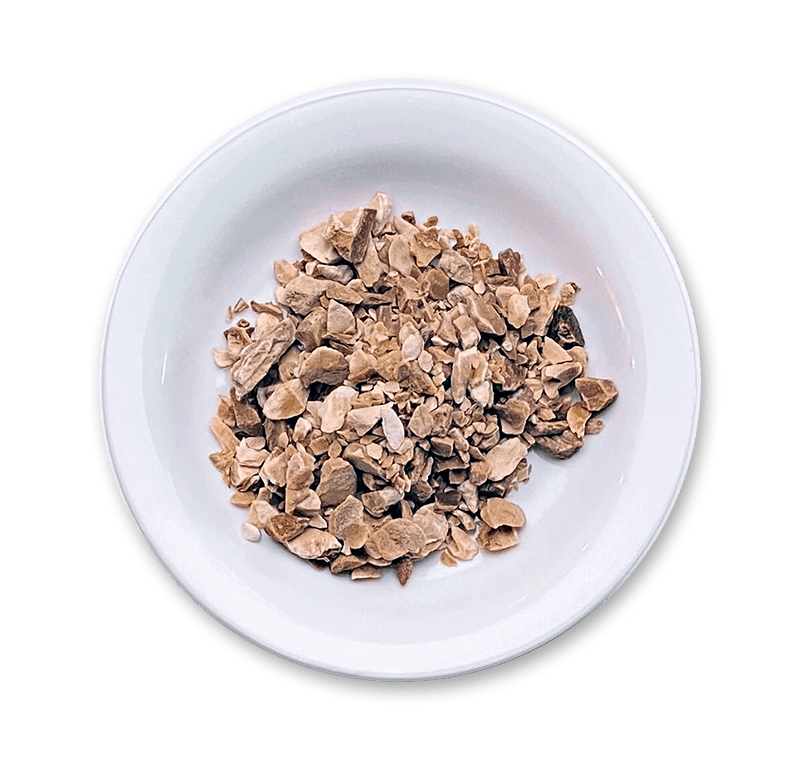
Orris root
The root of the beautiful Iris flower contains a very subtle, earthy aroma similar to that of violets. The name refers to the Greek Goddess of the rainbow. You probably also know the flower by its heraldic name: the ‘fleur de lys’, the national symbol of France. Funnily enough, this is a Frenchification of the old Dutch word ‘lieschbloem’, a symbol of the Salian Franks who lived in Flanders, where the Iris was flourishing, especially on river banks.
Orris Root is a traditional part of the aroma accord which gives gin its distinctive flavour. The “fixative” powers of the herb help bind the aromatics of other ingredients more tightly into the solution.

Lemon Peels
Citrus peels contain hundreds of pores filled with citrus oil. This oil has a remarkable taste and aroma – just think of the smell when you peel a lemon.
Lemon peel is one of the most important gin botanicals, because it contributes to a fresh citrus note whose crispness nicely compliments the heavier juniper and earthier spice notes. It hardly needs pointing out that a slice or twist of fresh lemon is the most common garnish for G&Ts.
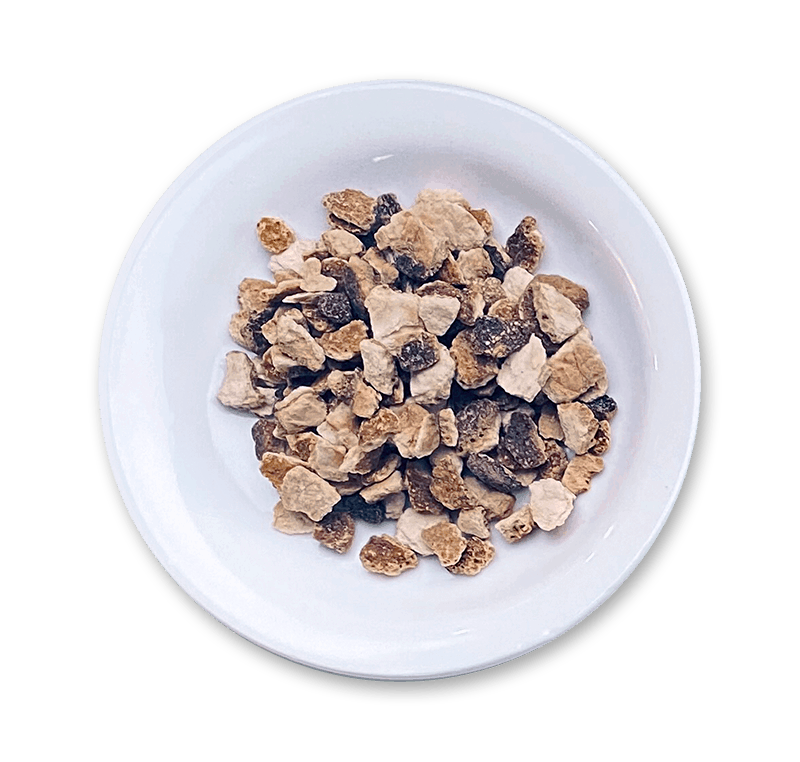
Orange peels
Orange peels contain hundreds of pores filled with citrus oil. This oil has a remarkable taste and aroma – just think of the smell when you peel a tangerine. Just like lemon peel, orange peels are an important gin botanical, because it contributes to the fruity, sweet and rich character of the gin.
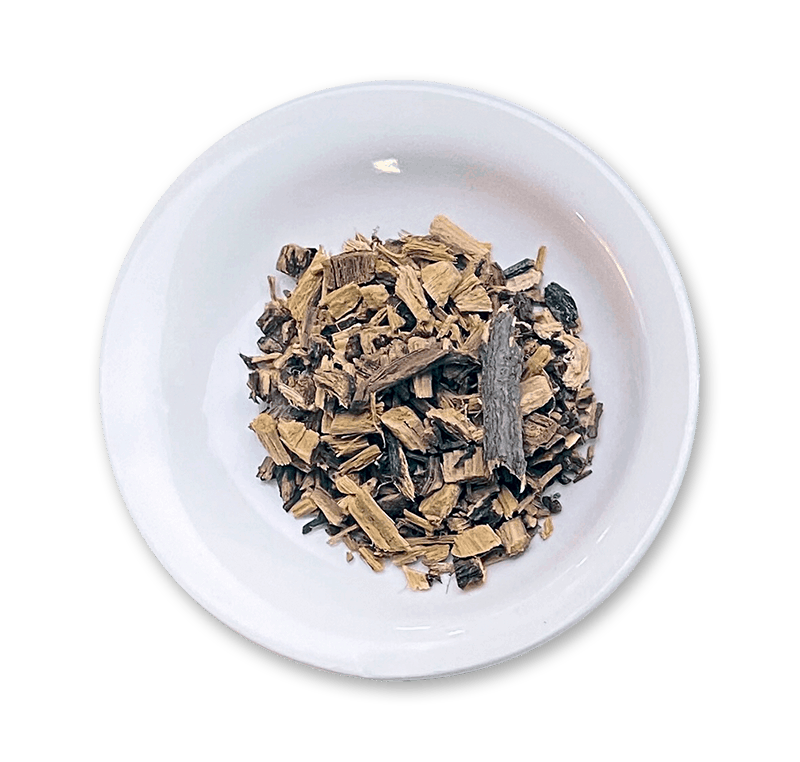
Liquorice
Liquorice is the root of which a sweet, aromatic flavouring can be extracted. In Aalst, the place of birth of Flemish Gin 23, it is known as ‘kalisjestok’ (“liquorice stick”), because It does indeed look a bit like a stick. It used to be very popular with children to chew on, as the root contains a sweetener that is 30 to 50 times stronger than sugar. It is liquorice that brings all the other gin botanical flavours into harmony.

Gentian
Gentian is a plant with beautiful flowers that grows mainly in mountainous regions. It is best known for its typical bitter taste, which is why it is also used in bitter aperitifs, liqueurs and cocktail bitters.
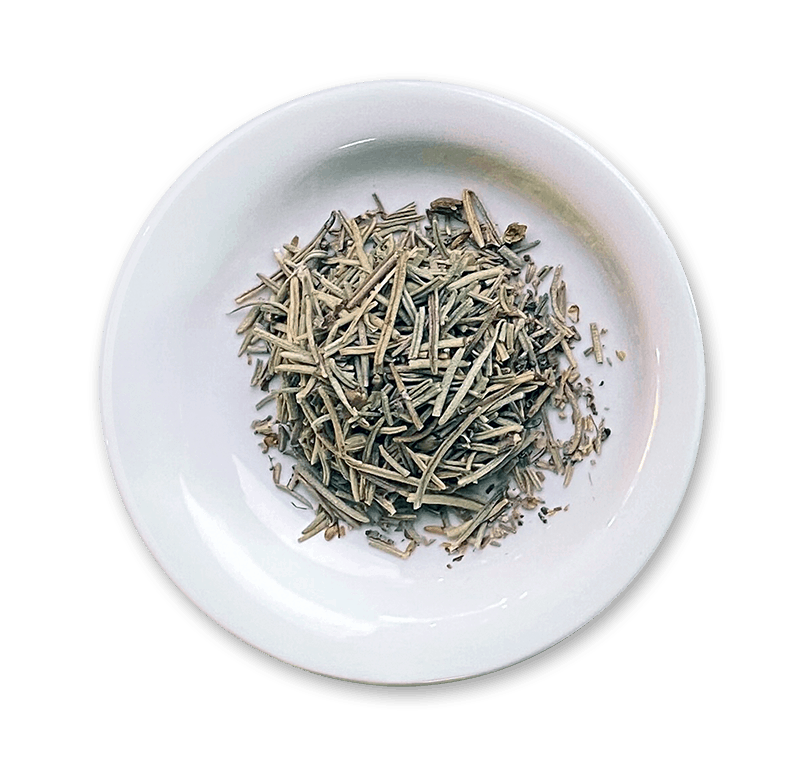
Rosemary
Everyone knows what rosemary is, with its wonderfully penetrating, even a little resinous, perfume. The name comes from the Latin ‘rosmarinus’, which means sea dew, probably because this evergreen shrub was abundant on the coast. From ancient times until the Middle Ages, the herb was associated with love. Wedding garlands were often made from it.
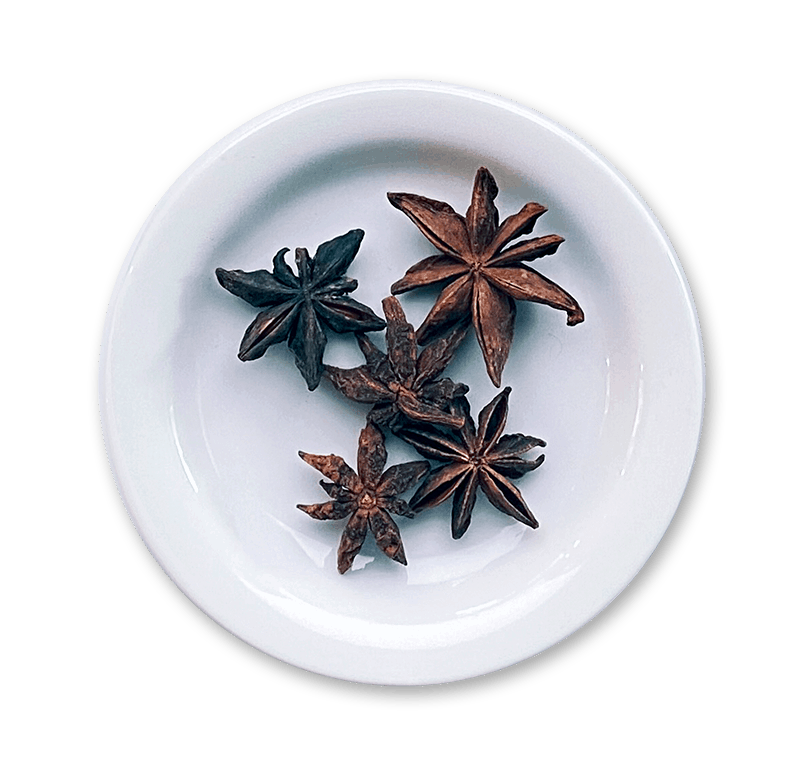
Star Anise
Star anise is the dried husk of a fruit, not to be confused with the anise plant. Star anise has a similar flavour, but is more pungent and powerful. The tree that bears the star anise fruit is called ‘Illicium Verum’, which freely translated means ’the real temptation’. Star anise is an intensely aromatic spice, giving a pleasant, sweet, aniseed punch to the gin.
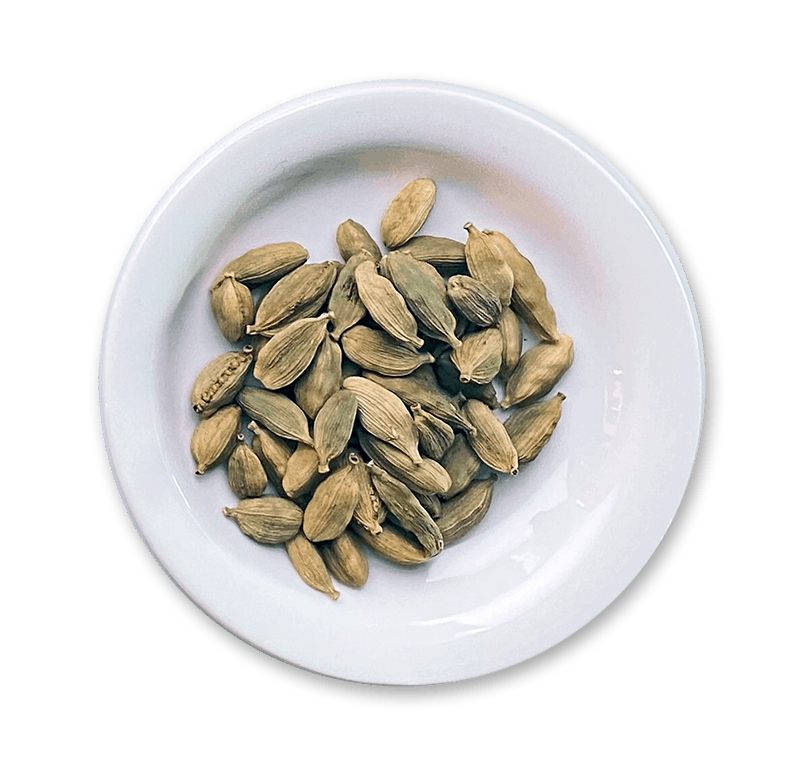
Cardamom
Cardamom seeds have a sweet, aromatic, very pleasant smell. As early as 3000 BCE it was traded as far away as the Mediterranean Sea. It was used as a digestive and breath freshener, among other things. It is used in “speculoos” (typical Belgian biscuit) and other cakes.

Coriander seeds
Coriander seed is also known as dizzy seed, but we do not know why. Perhaps it is because of its intense slightly sweet, slightly spicy citrus flavour.
Next to juniper, coriander is one of the key botanicals in gin. Coriander seed is very different in flavour delivery to fresh coriander; it puts light citrus notes into gin: lemon zest with a hint of lime, and slightly spicy notes.

Cinnamon
Cinnamon is the inner bark of the shoots of the cinnamon tree. So not the bark, but the layer just under it. We use real Ceylon cinnamon for its strongly aromatic, sweet, warm taste.
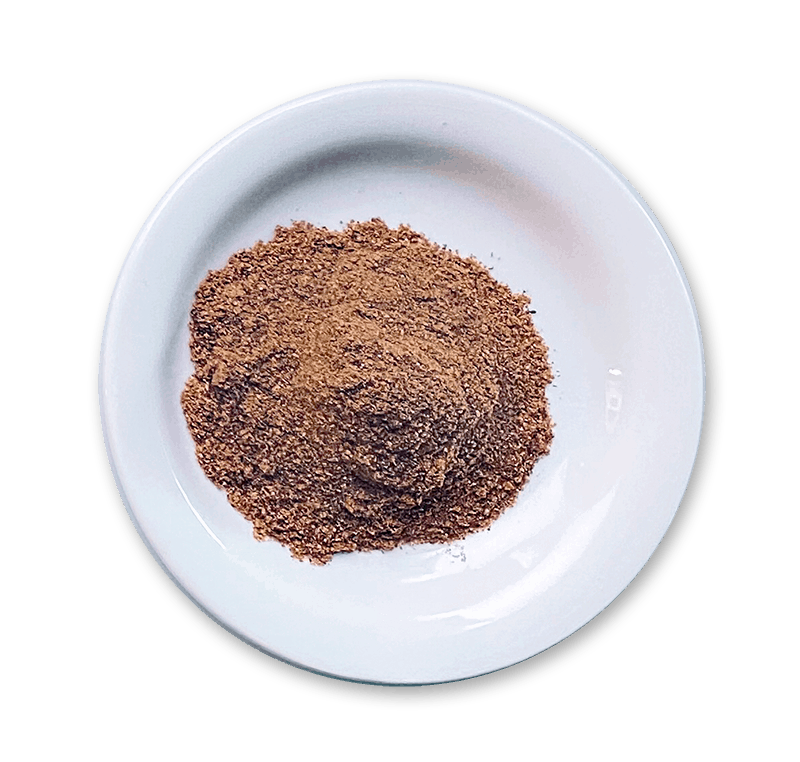
Nutmeg
Who does not know the wonderful smell and taste of nutmeg? It looks like a simple little nut, although it is actually a kernel, but it is not that innocent. The nut was originally only found on the Banda islands in Indonesia. Nutmeg has been known in Europe since the early Middle Ages, but it was extremely rare and therefore in great demand.
By the end of the 17th century, the nut was no longer so rare, but it was still a status symbol for the rich. Evidence of this are the small silver boxes, the size of one nut, with a small grater hidden in the lid. This way, you had your portable nutmeg grater with you everywhere. Nutmeg was grated on almost everything back then, wine, water, tea, beer, meat, fish, vegetables, fruit, you name it. If you could afford it, of course! Nutmeg gives our gin a lightly sweet spiciness and a gentle woodiness.
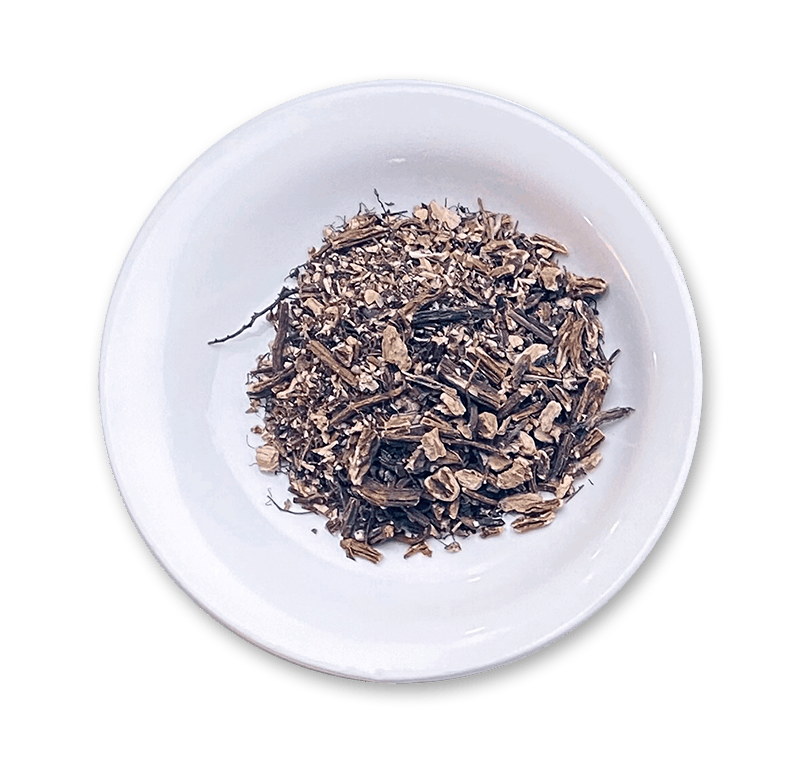
Angelica
Angelica is easily found throughout the northern hemisphere. It has a sweet and pungent aroma and has been used everywhere for its medicinal properties.
It has an intense, fragrant odor. The plant forms part of the base accord for gin, consisting of juniper, coriander and angelica.
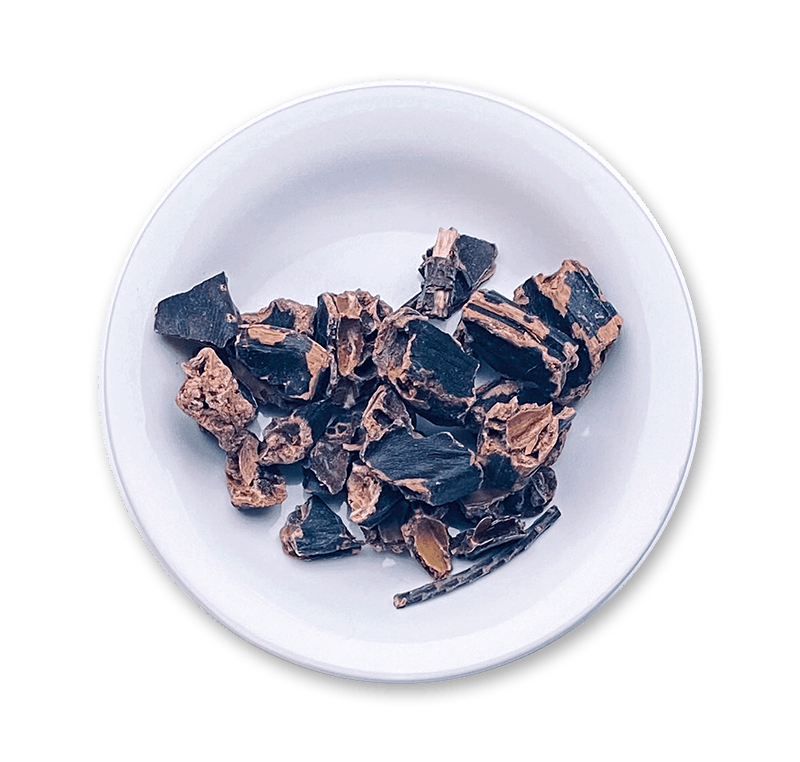
Carob
The pods of the carob tree have a high nutritional value, hence the comparison with bread. It is a sweet fruit with aromas of cocoa and coffee. When the pods are roasted and ground, you get carob powder, which was used as a substitute for cocoa powder. Carob is not a frequently used botanical for gin. We like to use it to give an extra punch to the flavour profile of FG 23.
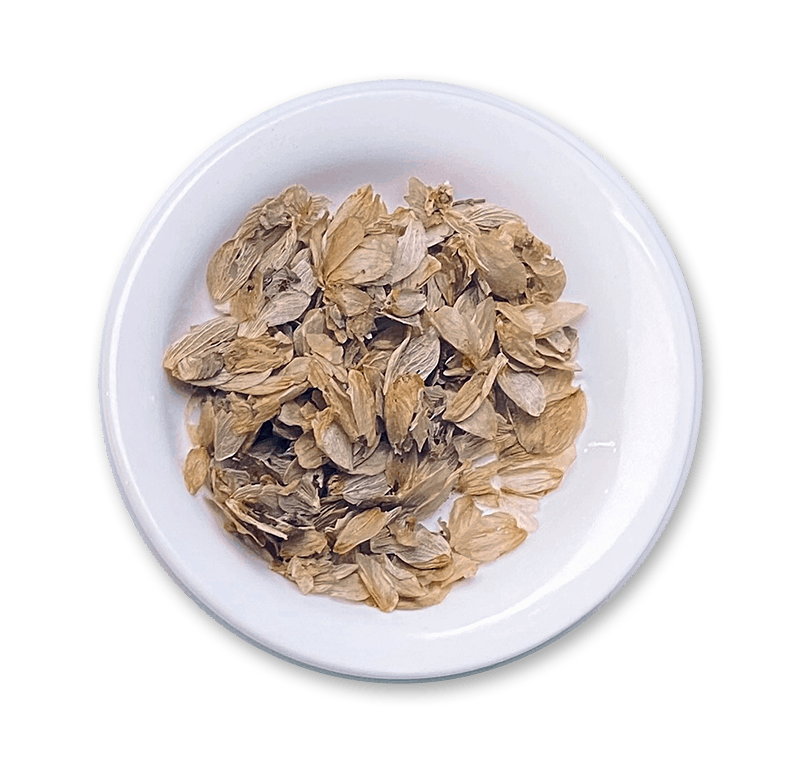
Hops
Everyone knows that hops are mainly used in beer, both for taste and preservation. Now hops are also used in gin, and not really for preservation – the alcohol does that – but purely for that typical floral, slightly bitter aroma. In the past, you could simply go and pick wild hops at the edge of the forest. Now there are only few hop-growing areas left in Flanders, 2 of them very close to the distillery.
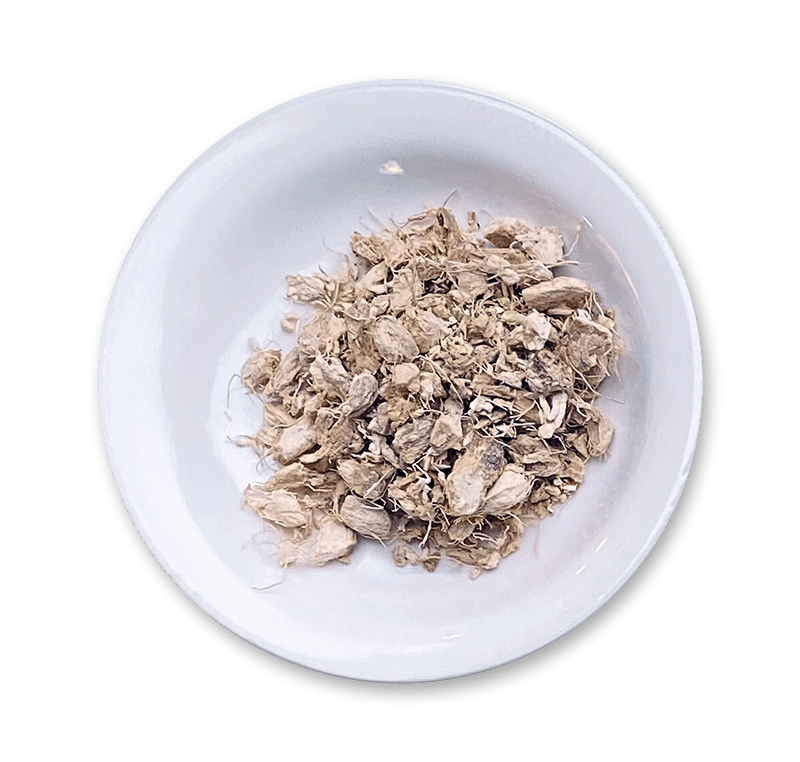
Ginger
Ginger is widely used as a spice and a folk medicine. We love its fresh, spicy taste and it combines great with citrus flavours.
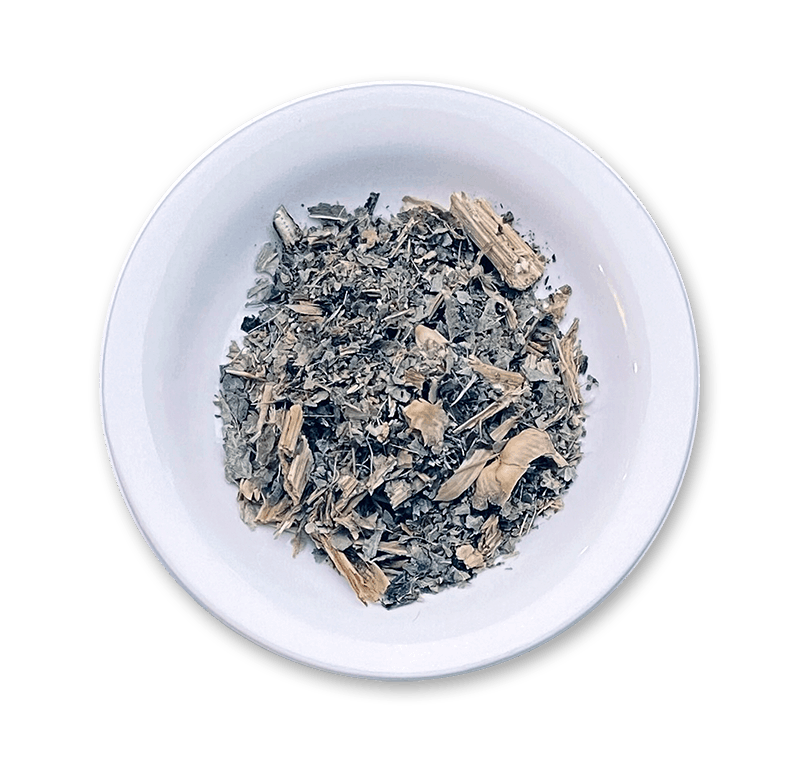
Blessed Thistle
A thistle-like plant found in the Mediterranean area, it is slightly aromatic and mildly bitter. Many medicinal, almost magical properties were once attributed to it. This is not a commonly used gin botanical. Nevertheless we use it in our FG 23 because we know the botanical as a subtle flavouring agent for our genevers.

Yarrow
Yarrow is found almost everywhere and has a somewhat bitter, bittersweet taste. Since ancient times, it has been used to treat battle wounds (therefore also known as Soldier’s Wound Wort) as it has blood-strengthening properties. Legend has it that Achilles had painted himself with a tincture of a plant to make himself invulnerable to arrows (from a magical centaur no less), everywhere but on his heel. That tincture was made with yarrow. When distilled it has a light, rosey note to it. It provides a bright, floral flavour profile to the gin.
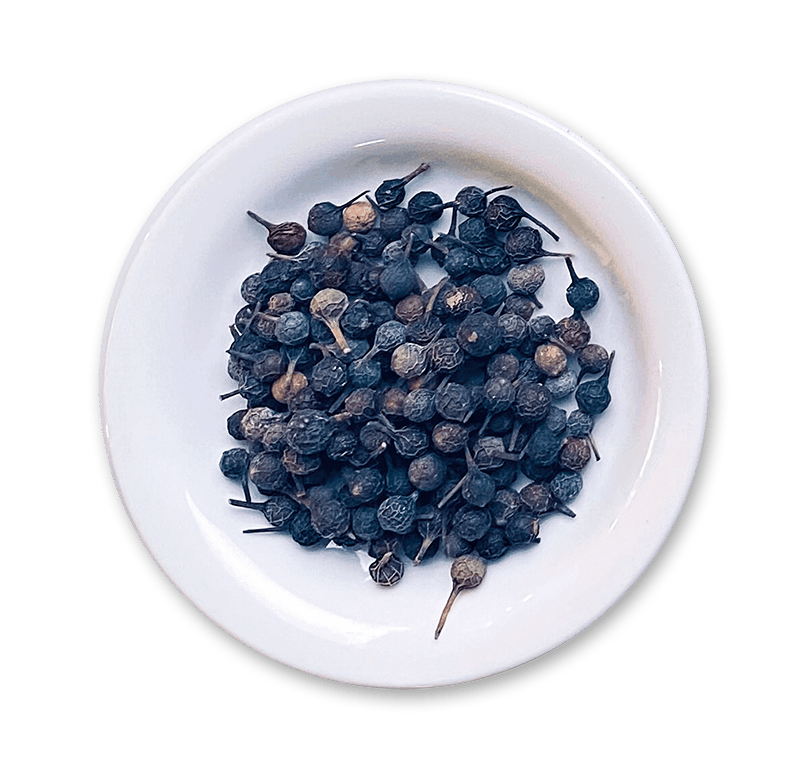
Cubeb pepper
Cubeb or tailed pepper comes from Indonesia and Sumatra. It looks like black pepper, but the dried berries have a small stalk, hence “tail”ed pepper. The name cubeb comes from Arabic ‘kabeba’ and is mentioned as such in alchemical writings. In The Book of One Thousand and One Nights from the 9th century, it is mentioned as a remedy for infertility and as an aphrodisiac. Marco Polo first brought it to Europe where it became so popular that it threatened black pepper trade. Curiously, it was also used by Catholic priests until the 17th century to exorcise demons.
We use it for its specific taste and hot-spicy aroma.
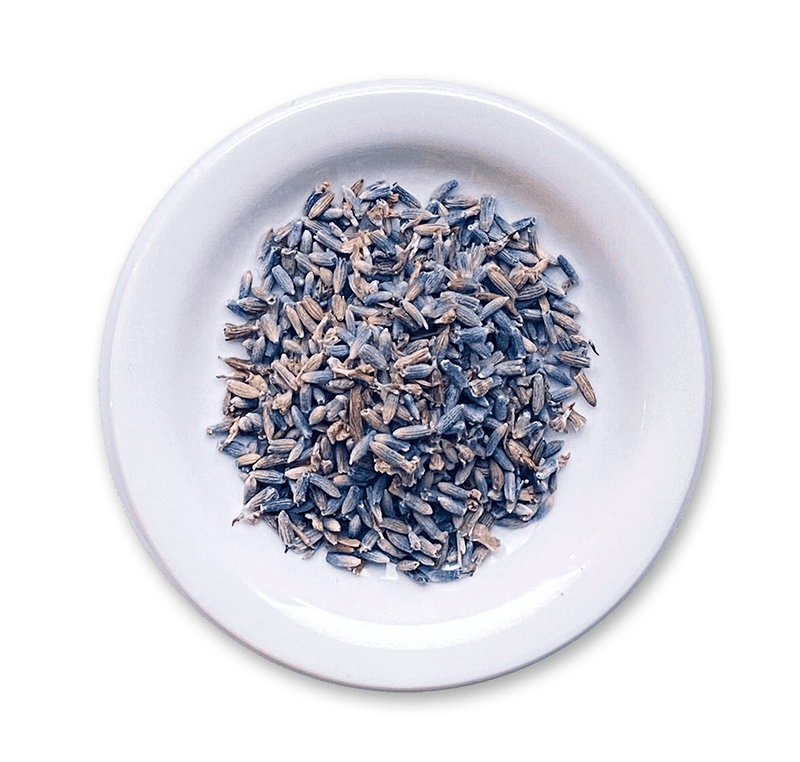
Lavender
The scent of lavender immediately transports you to the south of France, the Provence. In ancient times lavender was already distilled into perfumes and oils. Lavender was also used very early on to flavour drinks. Distilled, this flower spreads a very fresh, citrusy aroma.
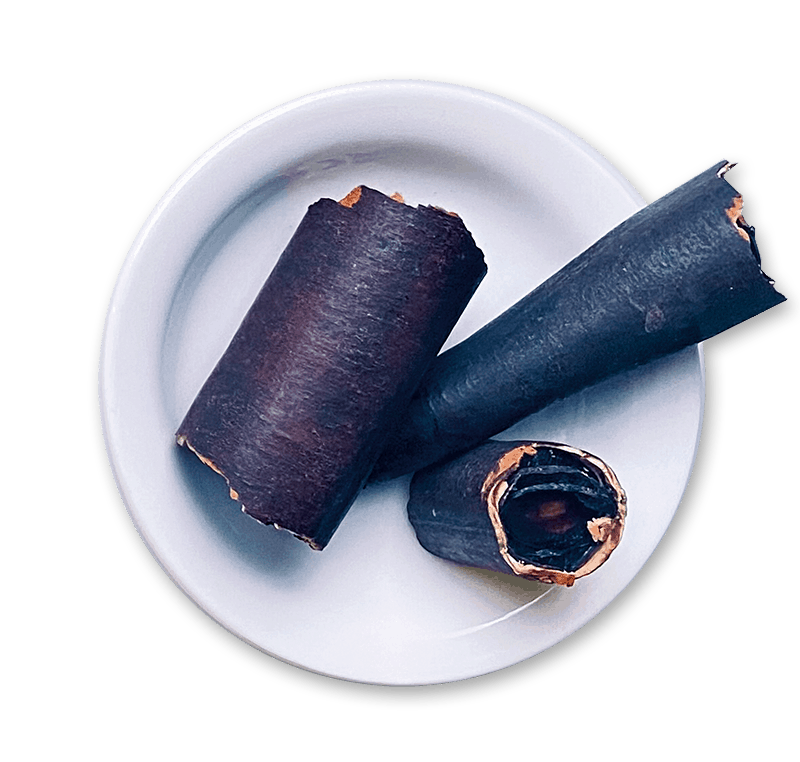
Cassia Bark
Cassia bark or drumsticks are the legumes of the Indian golden rain tree. These fruits have a diameter of about 2cm and can grow up to 60cm long, which makes their nickname a bit more logical. The fruits are picked and dried and have a cinnamon-like liquorice flavour.
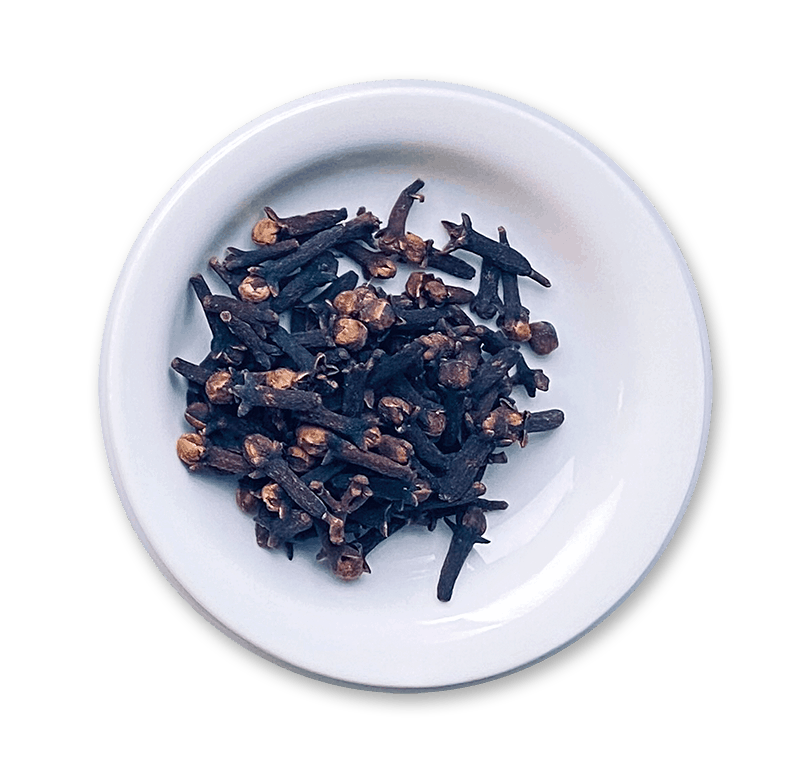
Cloves
The intense flavour of cloves needs no explanation. A clove is actually an unopened flower bud of the clove tree. It was already known to the Romans, but was quite rare and very expensive, as it came from Sri Lanka. It was so rare that in 1529 it was only available in two places in Europe: Lisbon and Antwerp (Belgium).
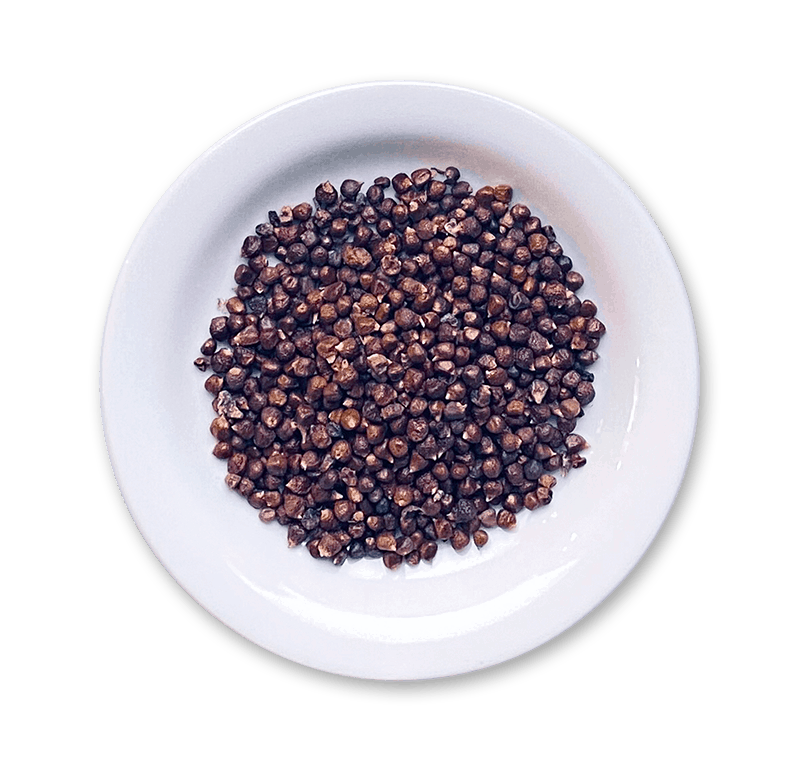
Grains of paradise
Grains of paradise or Melgueta Pepper is a plant from the ginger family and closely related to cardamom. It has a fresh-sour, hot taste.
African gorillas apparently love it and it has been found to be good for their hearts as well. The Efik people of Nigeria use it to predict the future and in Haiti they use it in Voodoo rituals.
About us
Stokerij De Moor
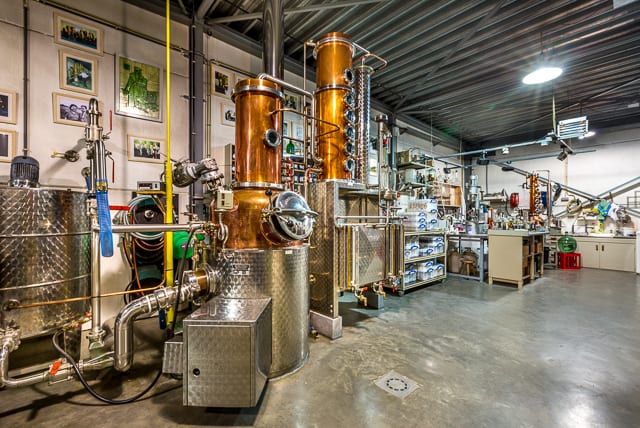
Flemish Gin 23 is made at Distillery De Moor in Aalst, Belgium. De Moor, founded in 1910, is a fifth generation family owned business and one of the last “warm” distilleries in Flanders, Belgium (a distillery that produces its own malt wine for the production of genever).
Besides gin, Distillery De Moor produces a whole range of authentic products such as genever and liqueurs. Everything takes place in-house, from grain to drop. In addition to FG 23 and Heart of FG 23, the two gin brands Distillery De Moor launched on the market, over 25 other gin brands go to Distillery De Moor to distill their gin.
Gin lovers are
better lovers
Mister Gin
Blog
News & cocktails
Discover the latest news, as well as cocktails, recipes and so much more here!
- All
- Cocktails
- News
Heart Of Flemish Gin and Tonic
Lavender 23
Rosemary Sour
Neat Pour
Your daily ginspiration
Contact us
Do not hesitate to send us a message, call us, or pay us a visit!
